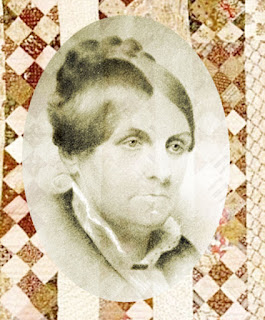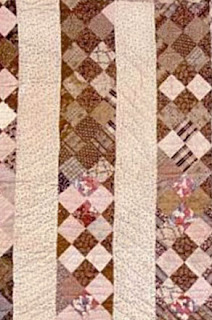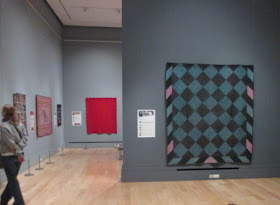Ad for the Lion Sewing Machine
Perhaps you have a new sewing machine?
And you are looking for a project.
Sarah's Revival by Sue Garman
Sue Garman has two BOM programs at Stitchin Heaven
Sue Garman's Hearts in Bloom
Both begin in February.
I've been looking for some Block-of-the-Month programs using traditional design. Here are a few more for 2016.
Backyard Gatherings From Primitive Gatherings
More traditional applique, this one in wool on flannel.
https://www.primitivegatherings.us/shop/product/9809-light-backyard-gatherings-b-o-m.html
Another wool on flannel below.
Beauty All Around
Pattern by Geoff's Mom Pattern Co.
at Painted Pony & Quilts
Not so traditional---but looks like fun:
Sue Spargo's Cuppa
And here's a real challenge---A Block a Day for a Year.
Plan for the 365 Challenge
Sign up to receive a daily block.
She offered EQ inspiration for the center using my Union Blues prints.
This one begins January 1, 2016.
Quilters' Paradise in California is planning to offer our Emporia Rose BOM this year. Coming Soon:
http://www.quilters-paradise.com/
I'm planning two series for 2016. On this Material Culture blog I am going to do a weekly William Morris Hexathon Quiltalong beginning in May, going for 26 weeks. We'll be running around England touring places important in the history of William Morris and the Arts and Crafts aesthetic while we stitch hexagon blocks with four-inch sides. My latest Morris reproduction collection Morris Earthly Paradise should be in shops in May so we'll start towards the end of the month.
On my other blog -Civil War Quilts- I am going to do a 12- month sampler Block-of-the-Month. Beginning on the last Wednesday of January, January 27, 2016, I'll post a free pattern for the first block in Westering Women, a celebration of America's overland trails and the women who walked west in the 1840s and '50s. You'll get a monthly view of history through the eyes of women who kept diaries and wrote letters 170 years ago, plus 12" block designs, each chosen for a traditional name recalling locations on the way west.
I'll be giving you more information about my series soon.
So get that new machine figured out.
There's a lot of sewing to be done.
































































